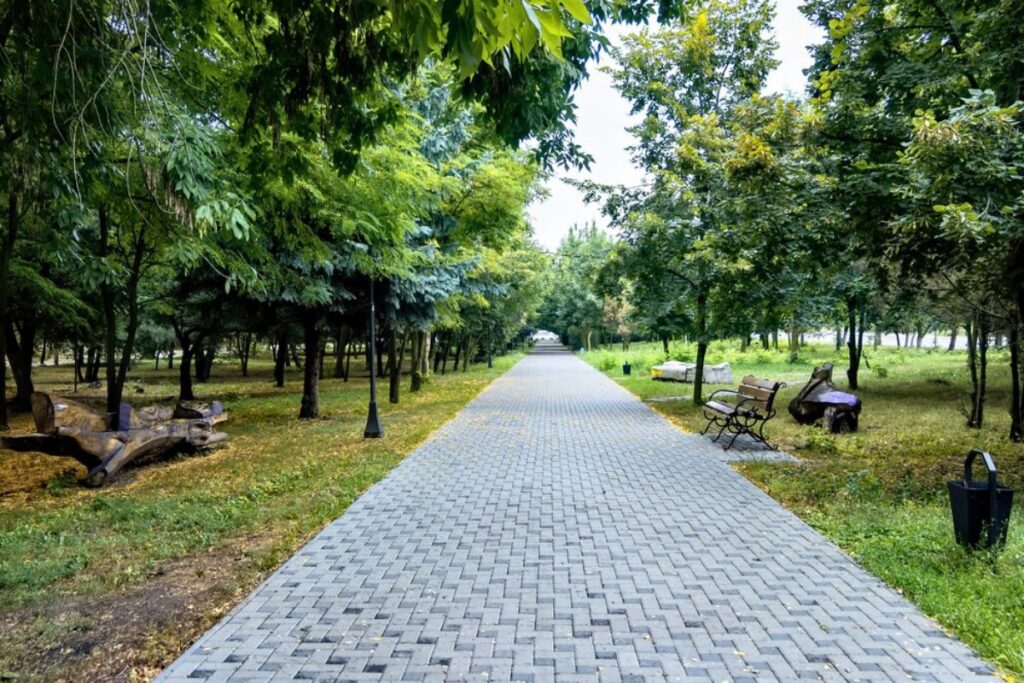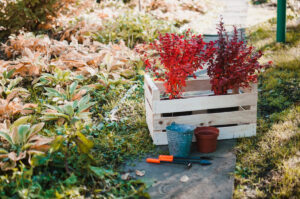The DIY & Crafts Blog

Creative Pathway Ideas Using Recycled Materials
It doesn’t have to be expensive or harmful for the environment to create a gorgeous garden container garden. Indeed, some of the most delightful outdoor spaces embody creativity and sustainability. Pathways are one of the best ways to add functionality and personality to your garden, and using recycled materials lends itself well to this effect. Garden paths out of reclaimed items. They’re great for both expert gardeners and weekend hobbyists. They bring an eco-friendly allure and character to any garden.
In this post, we’ll Join our trash-to-treasure revolution and discover 17 of the best-recycled garden ideas that can be made without spending a dime! Get inspired to head outdoors with these rustic and modern DIYS. Make your space unique with these easy, inexpensive, and practical fixes.
Why Use Recycled Materials for Garden Pathways?
Sustainability is no longer a trend—it’s a necessity. Incorporating recycled elements into your garden not only reduces landfill waste but also adds a unique, personal touch to your design.
Benefits of Recycled Garden Pathways
- Eco-conscious design: Lower your carbon footprint and promote reuse.
- Cost-effective solutions: Save money by repurposing materials you already have.
- Unique aesthetics: No paths are the same when made from salvaged goods.
- Creative expression: Showcase your personality through innovative design.
Using recycled items turns your garden into a storybook of history and imagination. From the rustic feel of worn timber to the industrial edge of repurposed metal, the possibilities are as limitless as your creativity.

Recycled Materials to Consider
Before you start digging up your lawn, let’s look at what materials you might have lying around that could be repurposed into a stunning pathway:
1. Broken Concrete (Urbanite)
Often called ‘urbanite,’ broken concrete slabs from old patios or driveways can be reused as stepping stones.
- Lay them in irregular shapes for a mosaic-like path.
- Fill the gaps with moss or gravel for added charm.
2. Old Bricks
Used bricks are timeless and easy to work with.
- Create herringbone, basketweave or running bond patterns.
- Combine with gravel for a stable, attractive finish.
3. Wooden Pallets
Pallet wood is versatile, especially for raised or dry walkways.
- Use slats as individual stepping boards.
- Ideal for woodland or rustic-themed gardens.
4. Recycled Tiles and Ceramics
Smash old tiles or crockery to create mosaic walkways.
- Great for artistic projects.
- Seal them properly to avoid slipping hazards.
5. Wine or Beer Bottles
Bury them neck-down to form borders, or use them whole for a glassy, colourful effect.
- Light reflects beautifully off the glass.
- Secure them with sand or soil to avoid wobbling.
6. Reclaimed Metal Grates or Panels
Give an industrial edge with old metal sheeting or grates.
- It can be set in concrete or gravel for stability.
- The weathered patina adds character.
7. Reused Rubber (Tyres or Mats)
Cut up old tyres or use rubber mats to create spongy, non-slip walkways.
- It is ideal for children’s play areas or shaded gardens.
How to Build a Recycled Garden Path
Creating a path is easier than you might think. Here’s a general guide that can be adapted to most materials:
1. Plan Your Layout
- Mark your path with string, chalk, or a garden hose.
- Consider functionality: will it be a main route or a decorative element?
2. Prepare the Ground
- Clear weeds and level the soil.
- Add a layer of landscape fabric to prevent regrowth.
3. Add a Base Layer
- Use sand or gravel to stabilise your materials.
- Ensure proper drainage to avoid pooling.
4. Lay Your Materials
- Fit the recycled elements together like a puzzle.
- Tap gently into place using a rubber mallet.
5. Fill the Gaps
- Use gravel, soil, or moss to fill spaces between materials.
- This helps prevent shifting and adds visual interest.
6. Seal or Finish
- Optional: apply sealant to tiles or ceramics.
- Sweep and water the path to help materials settle.

Inspiring Design Ideas
Now let’s dive into some latest designs that showcase just how versatile recycled materials can be:
Cottage Garden Charm
Use mismatched bricks or broken pottery to create a whimsical pathway that winds through flowering borders. Add solar lights for evening glow.
Industrial Chic
Combine reclaimed steel grates with gravel for a bold, modern look. Edging the path with railway sleepers enhances the contemporary vibe.
Woodland Retreat
Wood slices from old logs or pallets create a fairy-tale trail. These work best in drier areas to avoid rot.
Coastal Zen
Use flat stones and glass tiles in cool, watery tones. Great for seaside gardens or calming meditation zones.
Mosaic Marvel
Create detailed artwork using ceramic shards and old tiles. Ideal for entrances or garden focal points.
Real-World Examples
Community Garden in Leeds
Volunteers at a local urban garden transformed leftover construction debris into a winding network of pathways. By using broken pavers, bricks, and ceramic offcuts, they created a functional and visually engaging layout while cutting costs significantly.
DIY Garden in Bristol
One homeowner turned old wine bottles and gravel into a decorative spiral path. With colourful glass reflecting the sunlight, it quickly became the highlight of their backyard.
Upcycled Urban Terrace in Manchester
A small city garden used discarded tiles from a bathroom renovation. These were arranged in a geometric pattern and sealed, creating a durable, rather resistant walkway.
Expert Tips for Success
- Mix textures for visual interest.
- Avoid trip hazards by levelling materials properly.
- Test stability before sealing or setting materials in place.
- Use local resources like salvage yards or community exchange groups.
- Don’t rush: allow Don’t for the base to settle before finishing touches.
Budgeting and Sourcing Materials
Creating a recycled garden path can often be done for little to no cost if you plan ahead and source materials creatively:
Where to Find Recycled Materials
- Facebook Marketplace or Freecycle: Great for finding giveaways.
- Local skips or demolition sites (with permission).
- Charity shops that accept building goods.
- Your own home: broken pots, leftover tiles, unused timber.
Cost-Saving Tips
- Collaborate with neighbours on bulk salvaging.
- Use filler materials like gravel or sand to minimise the amount of solid material needed.
- Repurpose waste from other home projects.
Common Pitfalls to Avoid
- Poor drainage: can lead to oggy, unstable pathways.
- Neglecting safety: sharp edges from glass or ceramics should be smoothed.
- Inconsistent spacing: uneven paths are a tripping hazard and visually jarring.
- Overlooking maintenance: even recycled materials need occasional care.
Step Into Sustainability
Using recycled materials is where? It’s not just a deIt’s choice. It’s also a pledge. It’s to be imaginative and timeless. Reusing and repurposing can cut waste, save money and imbue outdoor spaces with a personal and loved feel.
Every pathway tells a story. You may use bricks from a torn-down wall, colourful tiles from colour-filtered backsplash, or edges from previous bottles. These upcycled garden projects are more than useful. But they help with items others might have ignored.
So, roll up your sleeves, dig into your scrap pile, and transform your outdoor space into a patchwork of memories, ideas and eco-chic charm.
Are you ready to kick off your next outdoor DIY project? Post your creations, ask questions, and pass on the inspiration in the comments below.









